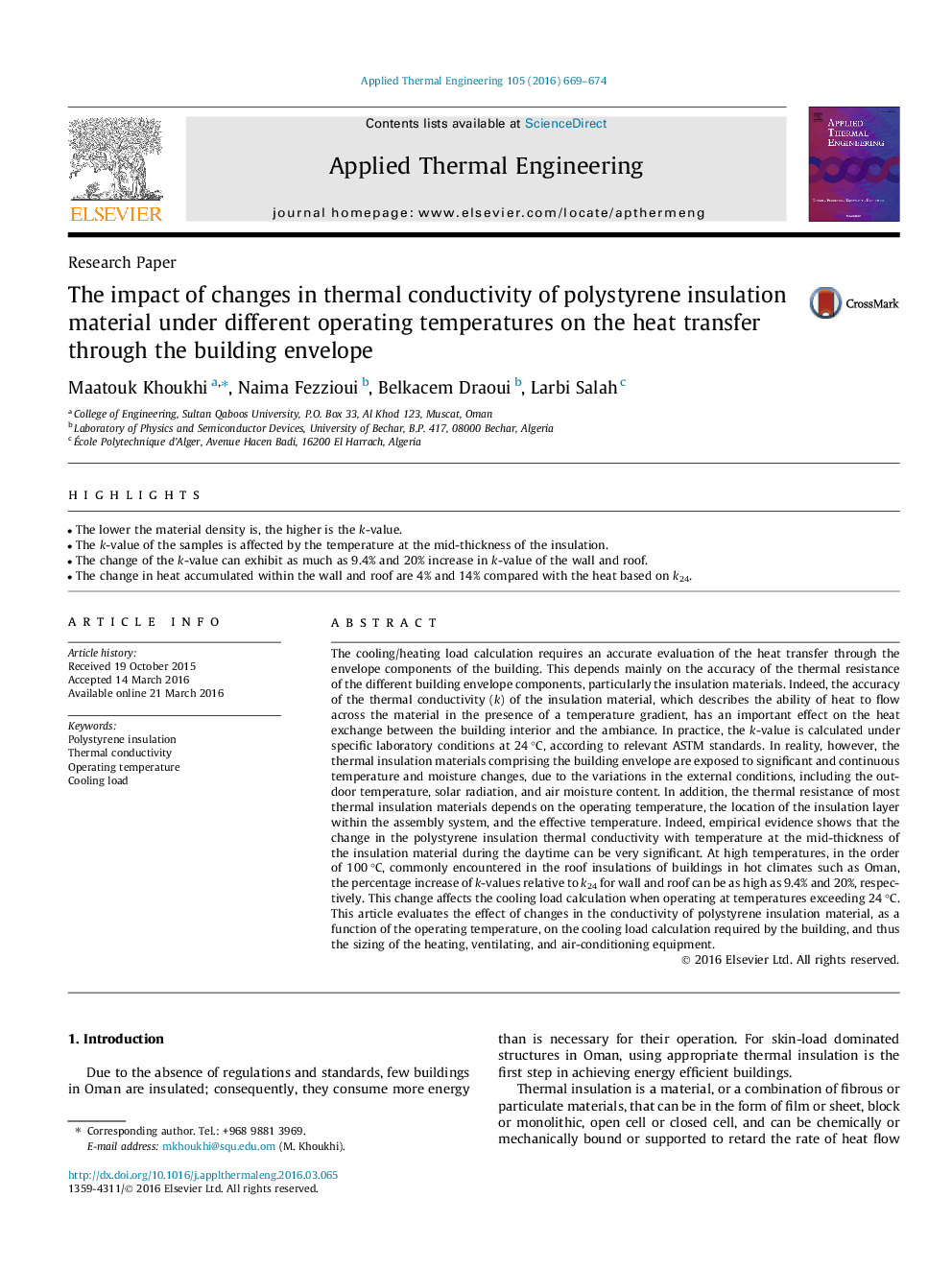| کد مقاله | کد نشریه | سال انتشار | مقاله انگلیسی | نسخه تمام متن |
|---|---|---|---|---|
| 644619 | 1457123 | 2016 | 6 صفحه PDF | دانلود رایگان |
• The lower the material density is, the higher is the k-value.
• The k-value of the samples is affected by the temperature at the mid-thickness of the insulation.
• The change of the k-value can exhibit as much as 9.4% and 20% increase in k-value of the wall and roof.
• The change in heat accumulated within the wall and roof are 4% and 14% compared with the heat based on k24.
The cooling/heating load calculation requires an accurate evaluation of the heat transfer through the envelope components of the building. This depends mainly on the accuracy of the thermal resistance of the different building envelope components, particularly the insulation materials. Indeed, the accuracy of the thermal conductivity (k) of the insulation material, which describes the ability of heat to flow across the material in the presence of a temperature gradient, has an important effect on the heat exchange between the building interior and the ambiance. In practice, the k-value is calculated under specific laboratory conditions at 24 °C, according to relevant ASTM standards. In reality, however, the thermal insulation materials comprising the building envelope are exposed to significant and continuous temperature and moisture changes, due to the variations in the external conditions, including the outdoor temperature, solar radiation, and air moisture content. In addition, the thermal resistance of most thermal insulation materials depends on the operating temperature, the location of the insulation layer within the assembly system, and the effective temperature. Indeed, empirical evidence shows that the change in the polystyrene insulation thermal conductivity with temperature at the mid-thickness of the insulation material during the daytime can be very significant. At high temperatures, in the order of 100 °C, commonly encountered in the roof insulations of buildings in hot climates such as Oman, the percentage increase of k-values relative to k24 for wall and roof can be as high as 9.4% and 20%, respectively. This change affects the cooling load calculation when operating at temperatures exceeding 24 °C. This article evaluates the effect of changes in the conductivity of polystyrene insulation material, as a function of the operating temperature, on the cooling load calculation required by the building, and thus the sizing of the heating, ventilating, and air-conditioning equipment.
Journal: Applied Thermal Engineering - Volume 105, 25 July 2016, Pages 669–674
